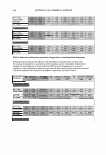ADHESION FAILURE IN HAIR 359 Figure 8. Cuticle chipping from dry combing hair fibers. DEEP TRANSVERSE CRACKS ACROSS THE CUTICLE Hydrophilic regions are swollen more at high humidity or in water and are more deformable than in the dry state. The swollen cortex exerts pressure on the cuticle-cortex CMC (Figure 1), thus we conclude that the hydrophilic "contact zone" (Figures 2A, 3) of the delta layer between the cortex and the cuticle becomes the weak link from Poisson contraction and swelling pressure, as suggested earlier (12). Therefore, crack initiation occurs in the cuticle-cortex CMC very likely near the interface of the contact zone (hydrophilic protein layer) and the globular protein layer (see the monolayer model of Figure 2A). Under the influence of swelling pressure, crack propagation during defor mation extends across all cuticle layers perpendicular to the fiber axis to produce deep transverse cracks (Figure 9), and virtually no scale lifting or buckling occurs if the fibers are not previously damaged (13). EXTENSION TO BREAK OR CATASTROPHIC FAILURE Continued extension or deformation leads to fiber breakage, with high moisture levels providing mainly smooth fractures for Caucasian hair, especially hair with little to no damage (see Figure 4A) (12). In the wet state, especially when the hair is not damaged or does not contain flaws, hydrophilic layers near hydrophobic layers are swollen and more extensible than in the d ry state and, to some extent, relieve strain in the hydro-
360 JOURNAL OF COSMETIC SCIENCE Figure 9. Deep cuticle cracks perpendicular to the fiber axis from extension cycling at high RH (13). Reprinted with permission of the Journal of the Society of Cosmetic Chemists. phobic layers because of their greater extensibility. Thus, greater strains are allowed for any stress (at high moisture levels), and all layers are stretched close to their limit so that when failure occurs, crack propagation can be rapid and "uniform" through all layers, providing smooth fractures. At high RH, crack initiation is often near the periphery, in the proximity of or in the cuticle-cortex CMC (Figure 1), and when wet, cortical cells are weakened and strained to their limit thus failure can occur within the cells themselves. As discussed by Karnath and Weigmann (12), the swelling pressure on the cortex, in conjunction with Poisson contraction and tensile forces acting along the fiber axis, creates intense pressure on the cortical cells near the cuticle-cortex junction, leading to crack initiation that propagates rapidly toward the center of the cortex and provides a smooth fracture. Negroid hair fibers behave differently because of their natural twists and flaws caused by damage from grooming and product treatments. This type of hair, even when wet, tends to give step fractures (42%) (with much longer lengths of axial fracture), fibrillation (24%), and angle fractures (21 %), as compared to Caucasian hair with 91 % smooth fractures and only 9% step fractures (16). FAIL URE OF ADHESION DURING HEAT DR YING OF HUMAN HAIR Gamez-Garcia (17) has shown that during heat drying, because of evaporation of water from the hair surface, the top layers of the uppermost cuticle cells become more rigid and brittle than the underlying layers and a weakness first appears as white lines on the cuticle surface. These lines run parallel to the axis of the fiber. On further wetting and blow-drying, cuticle cracks become fully developed through the surface and top layers of the uppermost scales. In many SEMs the cracks can be seen to extend laterally beneath the surface in the uppermost scale layer (Figure 10), most likely at or in the endocu-
Purchased for the exclusive use of nofirst nolast (unknown) From: SCC Media Library & Resource Center (library.scconline.org)






































































































